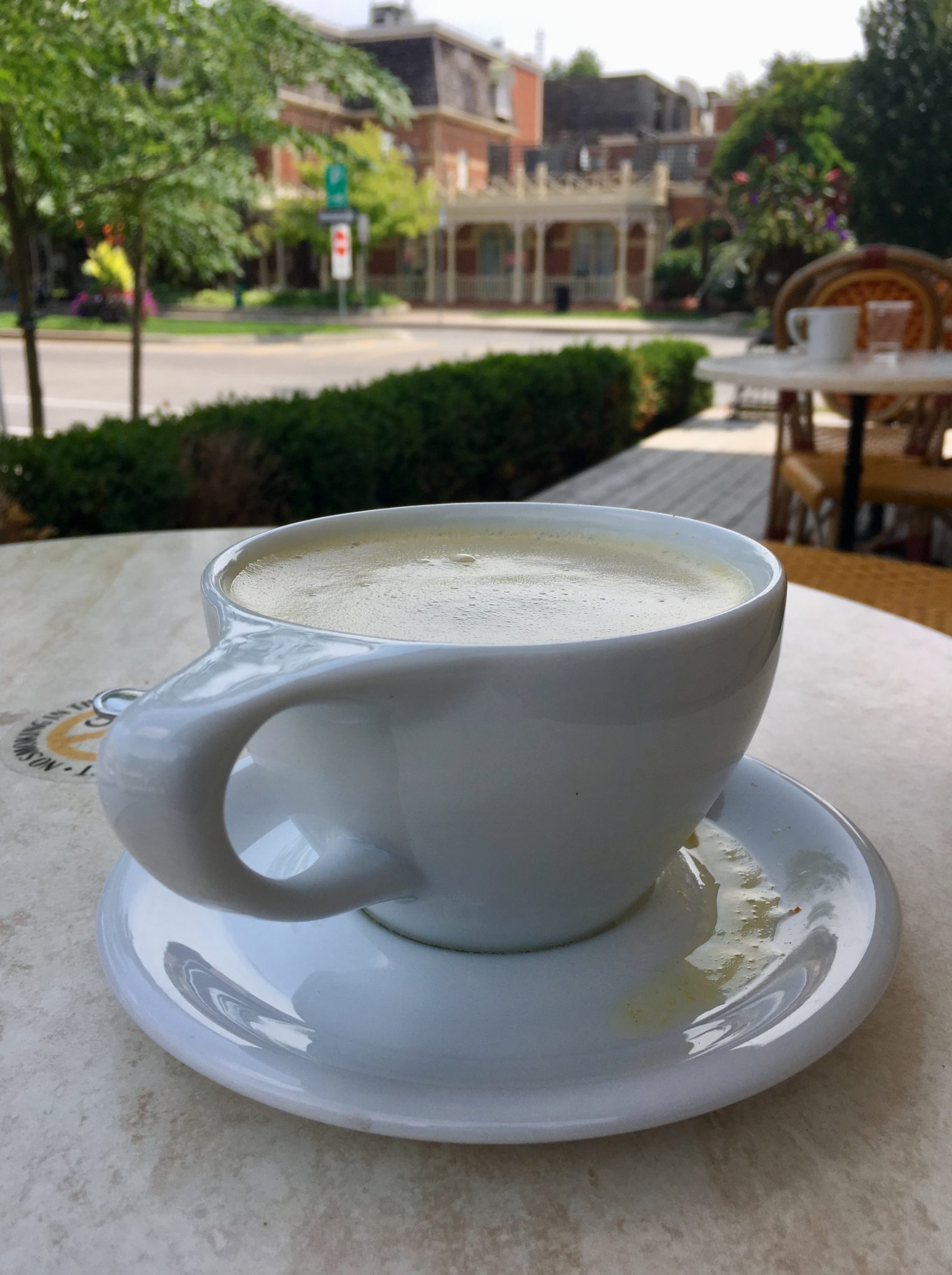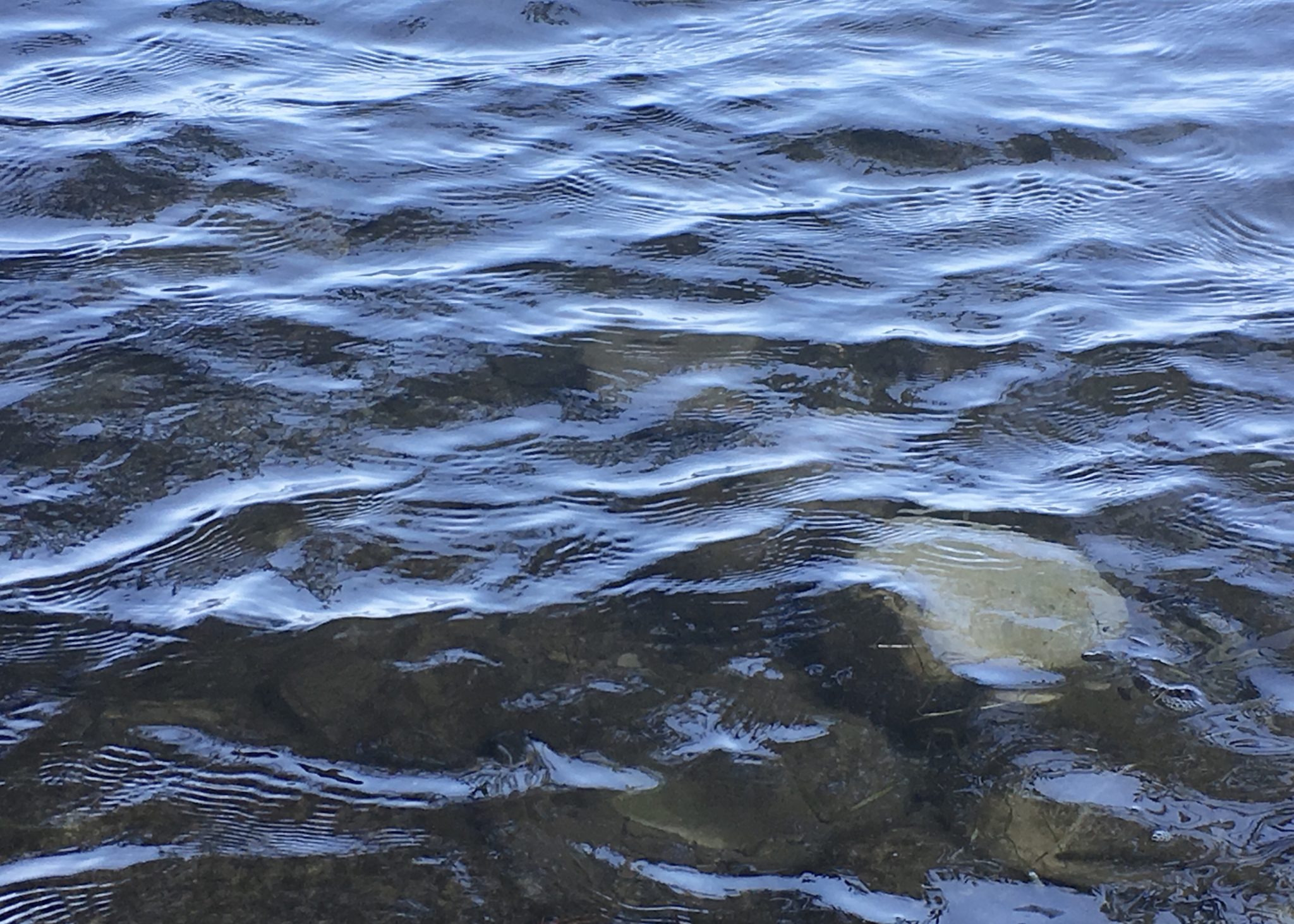Issue 2 of Emergence Magazine, has a 5 Part Practice in listening, which I did over the past week. Here’s what I discovered.
1. Where is the place you spend the most time indoors? Go to this place. It could be a room in your home or your office. Sit or lay down in a comfortable position. Spend 10 minutes with your eyes closed, listening to all of the sounds around you, nearby and far away. What do you hear?
August 6, 2018 (3 p.m.) – I spend a lot of time in my office, generally a very quiet place. It’s good to have a place like this where you can hear the subtle sounds, a place where I can focus on the task at hand. On this day, the door and windows were closed.
What I heard: the fan whirring, my breath, an occasional swallow in my throat. The pops and bangs of my daughter vacuuming, the hum of the vacuum. Outside, cars driving by, maybe one a minute. After about 5 minutes, the wind picked up and I could hear it whistling in the branches of the maple tree. At the end of the 10 minutes, there was a soft rumble of thunder.
2. Seek out a public or urban environment—a local coffee shop, a busy street corner, your rooftop. Again, for 10 minutes, listen to the sounds around you. Try to take it all in, with equal value, without judgment. What do you notice?

August 7, 2018 (1 p.m.) – I sat outside of Balzac’s coffee shop near the Main Street in my small town. This is one of the busiest times of the year for tourists. However, there was only one woman sitting along the same outside wall and she left soon after. The louder sounds definitely predominated here.
What I heard: the hum of the air conditioner, traffic on the street, footsteps on the sidewalk, a little girl yelling ‘Doggie!,’ the clink of my glass on the saucer, my pen being placed on the table, muffled conversations of passersby, the side of my sunglasses snapping shut, the roar of the motors from a bus, a trolley and a delivery truck, the clop-clop-clop of horses hooves, bike gears changing, steps on the gravel. A server from Balzacs came out and said ‘hi there’ to some people and then moved chairs across the wooden deck (a scraping sound). My paper rustled sharp and clean as I turned the page in my notebook. A car idling on the road.
3. Find a natural/green space within your town or city—a public park or garden or a tree in your yard. Close your eyes and listen for 15 minutes this time. How is the quality of sound different in this location compared to the location in exercise #2?
August 7, 2018 (1:30 p.m.) – I moved on from Balzacs to Simcoe Park, where there were picnickers and children playing in the kiddie pool and playground. I noticed that I was writing down what was making sound rather than the sounds themselves. So, I tried to be more cognizant of how to describe the sounds. Closing my eyes helped as you can’t always identify what you’re hearing.
What I heard: trickling water from a fountain in the pool, two horns blowing, one a double beep from a car and the other I couldn’t identify, kids laughing and talking. I caught snatches of conversations – your brother’s way too fast, daddy, never try to commit a crime, you’re on vacation, ohhhhhh, over here, look here, now where should we go, nice. I heard gentle, easy voices and harsh, strong voices, chuckles and foreign languages. There were buses and cars in the distance and horses trotting, even a dump truck passed by. What sounded like animal cries was the creaking of metal swings. My headphones plopped on the ground and I banged my heel against the leg of the bench. I heard the sound of something rolling, a car door slam, and cicadas buzzing.
So many sounds there but my sense of hearing was more acute. As I walked to the lake, I noticed that it lingered for quite awhile. I heard birds chirping and realized I had not heard any at the park. Before I arrived home, though, thoughts began interrupting and interfering with my ability to listen.
4. Seek out a natural space, away from the hustle and bustle of the city. This space could be a wooded trail or a meadow with a stream. Sit or lay down with your eyes closed. For 30 minutes, listen to the sounds around you. What do you hear in this place?
August 11, 2018 (1:30 p.m.) I went to a secluded spot at the lake. Even though the town was overrun with tourists for Peach Festival, it was fairly quiet at this spot. I spent about 20 minutes sitting on a rock with eyes closed, listening.
What I heard: The constant hum of boat motors slicing through the water, the rhythmic lapping of waves at my feet. They grew louder depending on the boats going by in the distance. A cool south breeze whooshed in my ear. Conversations along the path behind me. A young boy threw rocks in the water – plop, plop, plop. The cicadas were buzzing and there was an occasional chirp from a bird. I heard the footsteps of someone coming near my spot to take a picture. At one point I heard the gurgling sound of water going underneath the rocks jutting out into the water. I sneezed and felt calm and refreshed.

Afterwards, I wandered over to the Peach Festival and found it a little overwhelming. Not too noisy, just too many people. It was hard to walk through and there were long lineups for food at every booth. I’d been planning to get a peach drink but after a few minutes I decided to go home.
5. Return to the place indoors from exercise #1. Repeat the first exercise. Has your experience of listening changed? If so, how?
August 14, 2018 (11:50 a.m.) I laid on the floor in my office this time and the fan wasn’t on. The window was open.
What I heard: Hammers hammering from a deck-building project next door, buzzing cicadas in the distance, a similar but more subtle tinkling sound that I believe is the constant vibrational energy in the atmosphere. You can only hear it when louder noises are not present. A car door slammmed and a handful of cars drove by. My stomach rumbled several times as it was close to lunchtime.
I thoroughly enjoyed this exercise and found that my sense of hearing became much more acute. I hope you try it too.
Lovely exercises of listening to practice, Kim. I will be doing them to practice as you suggest in your article!
What a great exercise! Thank you for taking us on your experience. As I was reading this I was thinking about where my spots would be in each location. I think even the ability to slow down for these 10-30 minutes is so vital to us, let alone the ability to actually listen instead of see. I will be giving this a try soon.
Yes! That’s exactly what I’d Hoped readers would do.
Thinking it will be a great exercise next week, after the busy holiday and I have completely my 365 Photography Project. I can almost see this being a monthly practice, trying different locations each time. I know for my next “learning” year, I would like to take the time to go slower with my life.